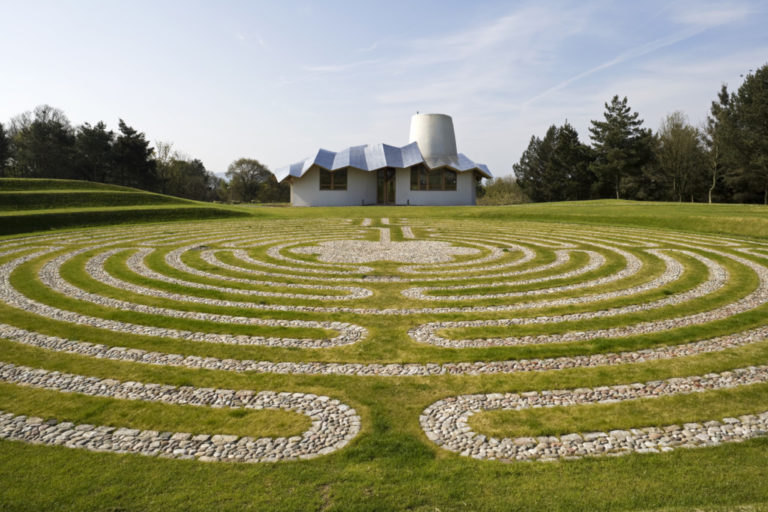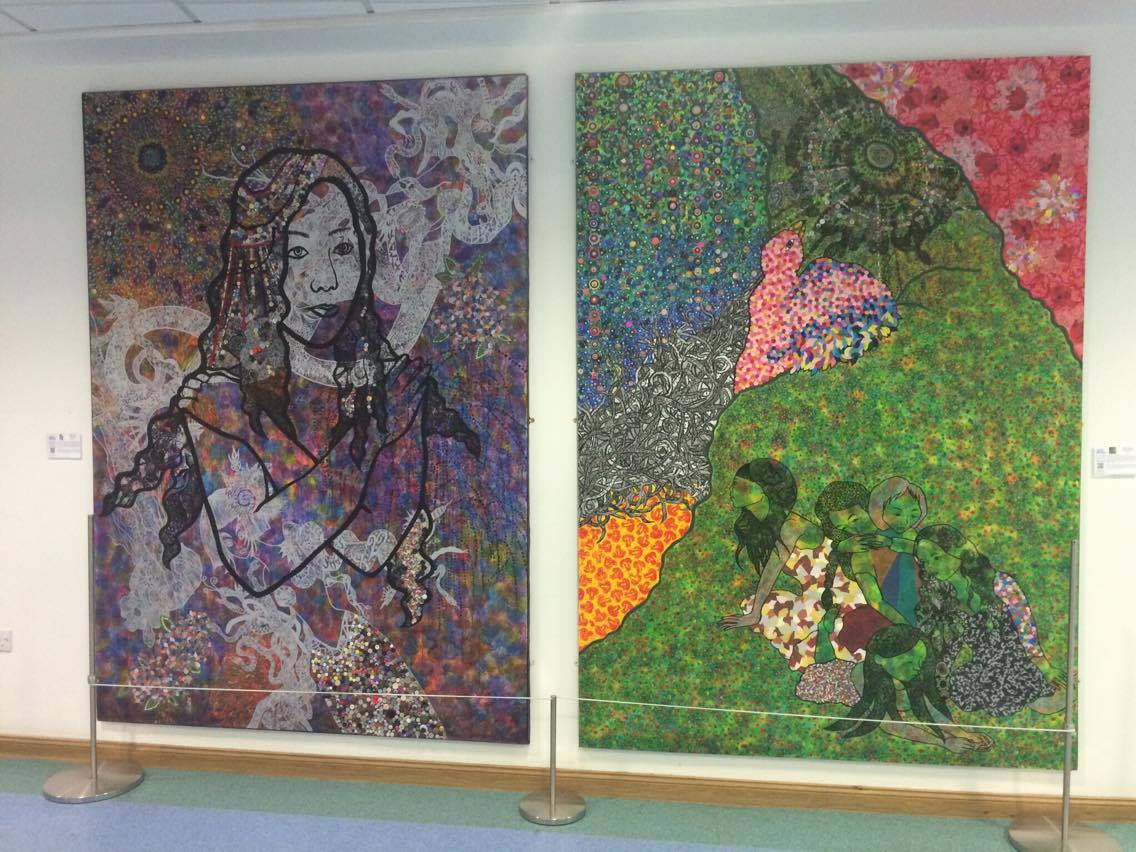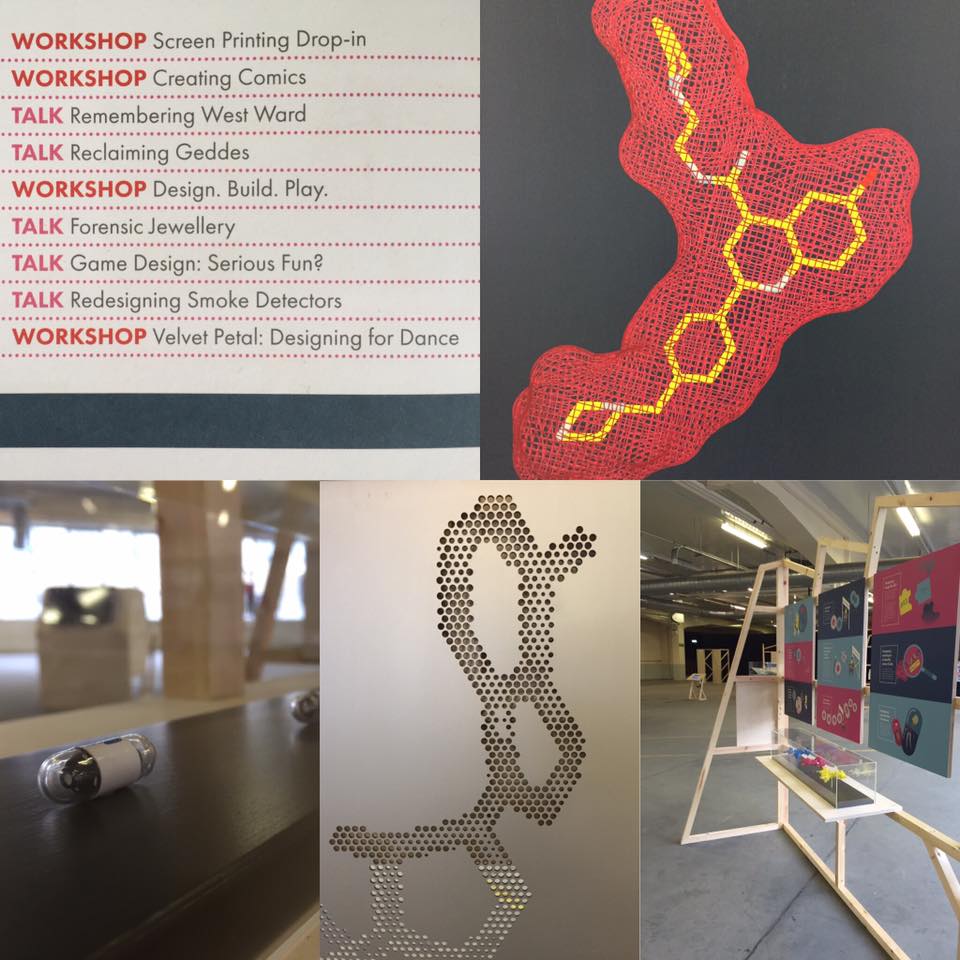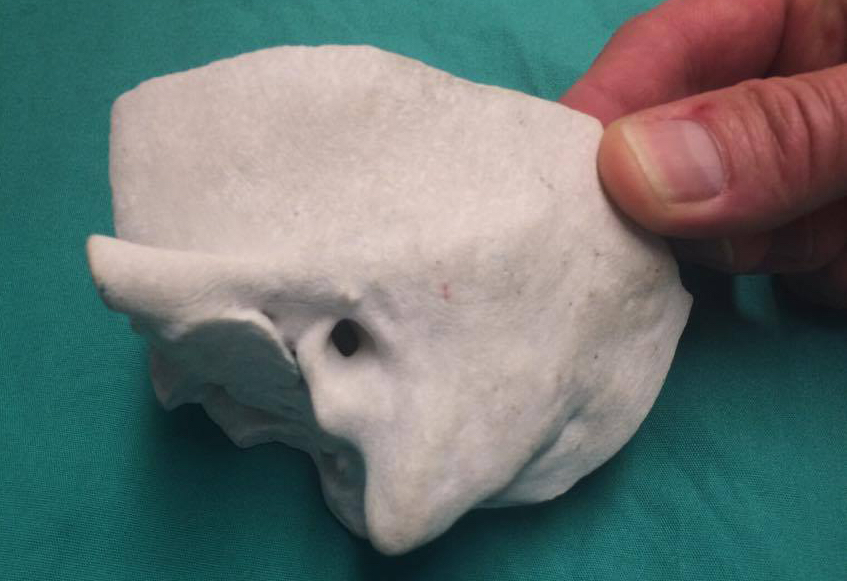
Each month this year, we’ve put a spotlight on individuals and organisations based in Dundee with a design and innovation focus to tie in with Scotland’s Year of Innovation, Architecture and Design. Having previously highlighted fashion, hubs, and digital organisations, we wanted to learn more about design ‘behind the scenes’ in areas that are not necessarily thought of but are useful for someone’s practice. Rodney Mountain, Otolaryngologist at Ninewells Hospital is championing innovative methods of design to improve healthcare in Dundee and explained more about what he does.
Why are you interested in design in healthcare?
I’ve been trained as a surgeon, so have been schooled in a science based mindset in terms of how we work. Outwith medicine, I have a creative side to me – an example being the creation of exhibits for ‘Sensation’, the Dundee Science Centre. The lasting exhibit that I am very proud of being the the “giant nose’ that children can climb inside and explore.
I’m not particularly talented or gifted as an artist but am quite creative when operating with my hands and surgical instruments in theatre. Surgery is a craft based profession where I have learned the skills required to perform a range of neck operations. The attainment of these skills are no different to those that any artisan learns as part of their profession or trade.
Service design can make a big impact on how healthcare organisations function. The traditional way that healthcare services improve our services is to hold meetings, where senior medical staff and managers look at our resources and try to improve the way we use them. It wasn’t until Mike Press, Head of Design Policy at Duncan of Jordanstone College of Art and Design (DJCAD) challenged me with the obvious flaw in our way of thinking with the simple question – “Rod, who are your users?” that the penny dropped. In any organisation, if you want to progress, you need to have your “users” at the table to help co-design your service, not the top-down method we currently use in healthcare. Since meeting Mike, I now include our patients and other staff members in redesigning our services wherever possible – it has it’s challenges but we’ve had a lot more interesting thoughts brought to the table. A lot of people in the hospital are now user focused and want to see Ninewells do more in terms of improving the patient and healthcare worker experience.
How do you work with local organisations to get more people to think about design in healthcare?
About 5 years ago I thought, why don’t we start trying to make links between health and social care with art and design, particularly with students and staff at DJCAD. I initially went down and met with Medical Arts masters students and lecturers and helped facilitate more healthcare exposure for the masters students. These links have now evolved to become a wide range of art,design, engineering and computing collaboration between Ninewells and the University.
Whenever new students join the Medical Arts Masters course, we host them in our hospital environment – we take them to theatre and clinics and give them the opportunity to sketch or photograph what we do. We now have a range of clinicians who supervise the students masters degree projects – that’s fantastic, as healthcare really needs the support from visual and creative input. In return the students need to see the context of our work, so it’s a perfect balance.
A good example of a great masters project relates to a student who wanted to look at anatomy and how we teach our students. In ear, nose and throat surgery we have to operate on the ear, so our trainees need to learn the complex anatomy of the bones of the ear in a lot of detail. The student, Caitlin Monney, looked at how our teaching could be improved, so managed to get a high resolution CT scan of the bone that contains your hearing mechanism. She then made an online digital 3D model to be used as a teaching tool. She then moved on to 3D printing it in plastic, which gave us a realistic replica of the bone. Finally we found someone in Holland who could 3D print in ceramic – to provide a fantastic replica with a very similar structure to bone. We can now give this to our trainees and allow them to drill and practice on a bone-like structure, printed in ceramic.
Working with design students at DJCAD has really opened my mind up to how design can be used in healthcare. A lot of people, particularly doctors, don’t really understand healthcare design – if you Google “healthcare design” you’ll usually just find a range of healthcare architects!
It’s fantastic that here in Dundee, the ethos of design is widely accepted and we’re one of the first NHS hospitals to embrace design and design thinking.
How do you use creative tools in your discipline?
We’ve got a lot of fantastic new ways of visualising how we teach our students and healthcare workers. Animations ,videos and augmented reality are the new teaching tools that we will use more of in future – we live in a world where people can pick up new skills from watching videos on YouTube! These tools are far more engaging than the traditional textbook methods used in the past.
A lot of patient information nowadays needs to use images and infographics that are far more visual. This makes them more appealing and breaks down language and knowledge barriers.
Last year, a medical art student and I produced a comic strip on patient safety , illustrating the steps we take to improve surgical safety. We then made it into a giant comic strip poster 9 metres long, which describes the journey of a patient if they come to Ninewells for an operation. We used it as a giant visual display to educate our healthcare workers and patients.
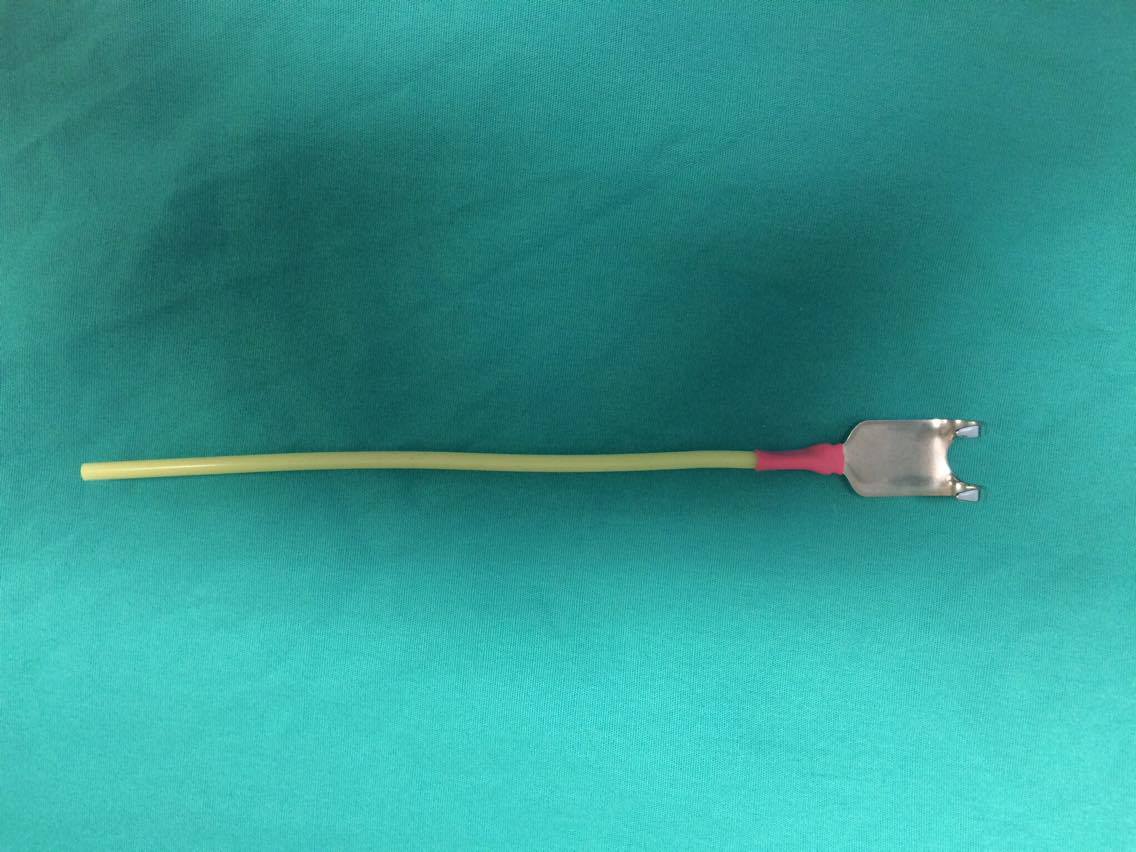
Lone Star – an elasticated retraction which enhances the role of the surgical assistant and operating surgeon.
You were involved in the inaugural Dundee Design Festival, can you tell us a bit more about what the exhibition was?
A few months ago when the inaugural Dundee Design Festival was announced, I thought, “How can healthcare design be profiled?”. When you think about it, there is so much healthcare design that could be displayed. We quickly got a small team of enthusiasts together and came up with ideas to profile the design of products, digital tools, lifesciences and environments in a creative way. We’ve got a really interesting product being developed in Dundee and Glasgow which is a pill sized video camera – once swallowed, it takes a video of your insides, replacing the traditional endoscope, which is a huge hosepipe like instrument. The pill video technology has been around for a while, but research teams in Dundee and Glasgow are now working on putting an ultrasound machine inside the pill as well as the camera! The microelectronic technology is mindblowing!
That was a great example of product design and we were pleased to incorporate it into the design festival. We scaled up the pill to in a rugby ball sized model so we allowed people to physically pick it up and look at all the components such as the battery, camera and ultrasound machine.
The other thing we’ve exhibited is a P53 gene linked to cancer, that was actually discovered in Dundee and is fundamental to whether or not you get cancer – it’s a gatekeeper gene. This is a bit of a dry subject to be honest but, it’s so important to drug design and life sciences. My colleagues, Richie Oparka and Annie Campbell created a 3D model of the gene, which allowed attendees to the festival to visualize the 3D structure of genes. This exhibit will hopefully let people thinking of design in a slightly different way, the micro design of molecules, genes and drugs.
Lesley Howells introduced the festival to the original architectural model of the Dundee Maggie’s Centre which is a piece of iconic architectural design for people in a healthcare setting. Dundee Maggie’s centre is a fantastic facility for people because it’s been so cleverly designed as an interior environment set in a tranquil exterior environment at Ninewells Hospital.
Mhairi Towler exhibited a few healthcare animations that I use in education, showcasing how well designed animations can tell a far more interesting story than a boring text based guide or book.
What do you think the future of healthcare design will look like?
I believe that “design” will be the glue that brings together the science of health and social care together with the arts and creative elements that are needed in healthcare. For too long a healthcare experience has always been very factual, measurable and data driven which is easy – but it’s equally important to create a good healthcare experience through the less tangible factors that come through a user centered art and design lead experience.
Expanding on the work that Caitlin has done on 3D printing ceramics, I believe that one day we’ll be able to 3D print soft tissue that is skin-like. I’m not sure when this might happen, but I’m hoping that one day I’d be able to scan a patient, 3D print them with ceramic bones and a soft tissue layers, then practice an operation on this lifelike model, before carrying out the real operation. It would also make a fantastic teaching method as it would allow trainees to practice repeatedly. At the moment, there’s a big jump from plastic models and virtual reality to the real thing. High resolution 3D printing advances in training will help reassure patients about how we train our doctors of the future.
Dundee is also going to focus on digital technologies in the community healthcare setting – we live in a great city with a number of great strengths in computer technology and the computer games industry, so it would be great to get these organisations more involved in designing digital technologies of the future.
My vision is that in a few years time, it will become normal for designers to be employed as part of large public sector organisations like the NHS. If you look at Harvard Medical School they have about 10 designers employed in a healthcare setting. Design will breathe new life into the NHS and revolutionise the patient and staff experience.
Unfortunately most of our politicians and medical leaders at the moment don’t quite understand the “D’ word and why design can help lead a new way of thinking. Our task in Dundee is to get out and educate by example and to showcase good examples of the impact of great design on peoples lives. We have formed a loose-knit group called “Healthcare Designed in Dundee” and plan to spend the next few years introducing Art and Design to Health and Social care. Watch this space!
You can watch Rodney’s Pecha Kucha Night talk here:
